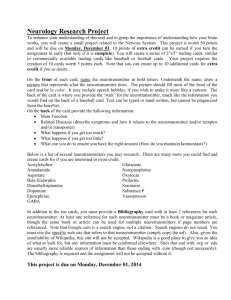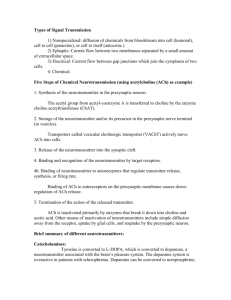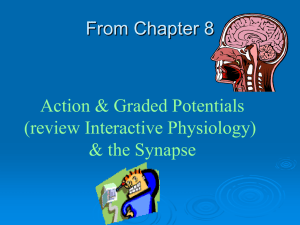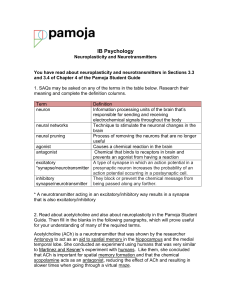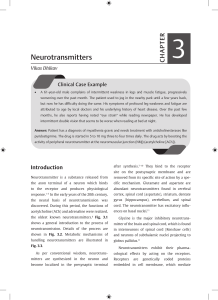Chapter 11 C Class Notes BSC...
advertisement
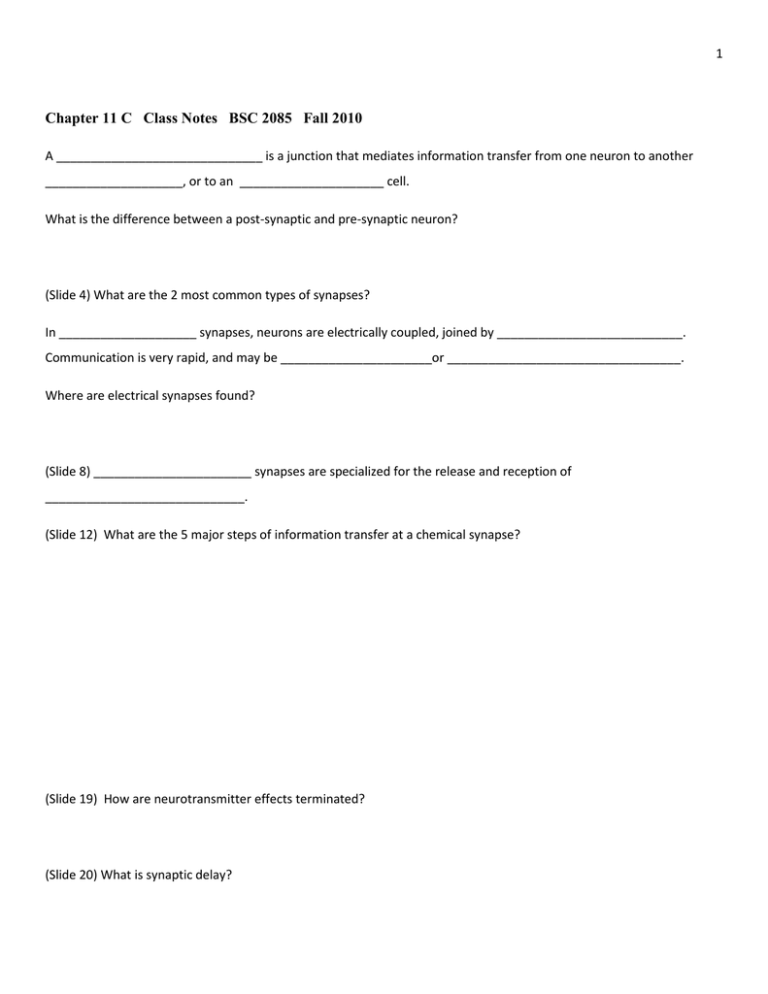
1 Chapter 11 C Class Notes BSC 2085 Fall 2010 A ______________________________ is a junction that mediates information transfer from one neuron to another ____________________, or to an _____________________ cell. What is the difference between a post-synaptic and pre-synaptic neuron? (Slide 4) What are the 2 most common types of synapses? In ____________________ synapses, neurons are electrically coupled, joined by ___________________________. Communication is very rapid, and may be ______________________or __________________________________. Where are electrical synapses found? (Slide 8) _______________________ synapses are specialized for the release and reception of _____________________________. (Slide 12) What are the 5 major steps of information transfer at a chemical synapse? (Slide 19) How are neurotransmitter effects terminated? (Slide 20) What is synaptic delay? 2 ______________________ are graded potentials, whose strength determined by: What are the 2 types of post-synaptic potentials? (Slides 23-24) Describe EPSPs: Describe IPSPs: (Slide 26) Describe 3 characteristics of summation or integration of graded potentials: Describe temporal and spatial summation: 3 What is LTP and where is it found? Most neurons make __________________ or more neurotransmitters, which are released at different ___________________________________________. Over _______________ neurotransmitters have been identified. Where is Ach released? What enzyme helps synthesize Ach? What enzyme helps degrade Ach? What are the 2 categories of biogenic amines? Name 3 catecholamines and 2 indolamines: Name 4 amino acids: Name and describe 3 peptides: Name a purine neurotransmitter, and please name 2 functions: Name 2 gas neurotransmitters and describe their functions: Name a lipid neurotransmitter. What binds to it? 4 What determines a neurotransmitter’s effect? Which neurotransmitters are usually inhibitory? Which neurotransmitter is usually excitatory? Where is Ach excitatory? Where is Ach inhibitory? Describe direct action by a neurotransmitter: (Slide 41) Describe indirect action by a neurotransmitter: What are 2 types of neurotransmitter receptors? (Slide 43) _________________________ or _________________________________ receptors are found at ___________________________________ channels; their action is ____________________ and brief. (Slide 45) _____________________________________ or _________________________________________ receptors are found at _____________________________________________________________; their responses are __________________, ________________________, complex, and often ________________________ and widespread. (Slides 46-47) Describe G-protein-linked mechanisms: 5 (Slides 56-57) What is serial processing and where is it used? What is parallel processing and where is it used? (Slides 62-62) Describe the features of axonal growth during development: Please Label:



